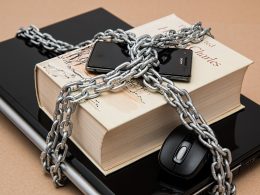ID Theft Defense
Introduction:
Identity theft occurs when someone steals your personal information and uses it to make money, open new accounts, file tax returns, make medical claims, and much more without your authorization.
Identity theft affects 1 in 20 Americans, but only around 0.14% of identity theft criminals are arrested. Fortunately, there are many ways you can protect yourself from identity theft.
Signs of Identity Theft:
- Unauthorized Payments: When you receive your bank statement, check each transaction. Any transactions you see that you are unfamiliar with may indicate that someone else uses your identity and information. Contact your bank to protect your financial assets.
- Credit Cards and Loans: Check to see if any credit accounts have been opened and if you received any loans that you did not apply for. You may not be aware of it, so check your credit history often to ensure there is no unusual activity.
- Inaccurate Documentation: If you see that the information on official documents is inaccurate, this could be a sign that someone else is using your information. Check documents like your credit reports or medical documentation.
- Removed Access: If you cannot access official information, there could be a chance that the hacker accessed your account and changed the information on there. They could have changed the username and password so that you can no longer access it. These accounts could include your credit reports, bank accounts, and more.
- Verify Identity: If you cannot verify identity for government documents, such as applying for a password or driver’s license, this could be a sign that your identity has been stolen.
Types of ID Theft:
- Financial identity theft: This is the most common type of identity theft, where a thief steals your financial information, such as your credit card number, bank account details, or Social Security number, and uses it to make unauthorized purchases or withdraw money from your accounts.
- Criminal identity theft: In this type of identity theft, a thief uses your personal information, such as your name, date of birth, or Social Security number, to commit crimes. The thief may use your identity to avoid arrest, obtain employment, or receive medical care.
- Medical identity theft: Medical identity theft occurs when someone uses your personal information to obtain medical services, prescription drugs, or insurance coverage. This type of identity theft can also result in false entries being added to your medical records, compromising your health care.
- Synthetic identity theft: Synthetic identity theft is a form of identity theft where the thief creates a new identity using a combination of real and fake information. A thief might use an actual Social Security number with a phony name and address to apply for credit.
- Child identity theft: Child identity theft occurs when a thief uses a child’s personal information to open bank accounts, apply for credit, or commit other forms of identity theft. Children’s identities are particularly valuable to thieves because they often go undetected for years, allowing the thief to use the stolen identity for an extended period.
- Tax identity theft: In this type of identity theft, a thief uses your Social Security number to file a false tax return and claim a refund. Tax identity theft can result in delayed tax refunds, additional taxes owed, and other financial difficulties.
What To Do If Your Identity is Stolen?
If you know that your identity has been stolen, there are many steps you can take to protect yourself.
- Report it online on IdentityTheft.gov
- Report it to a local police station
- Report to the social security administration
- File a report with identity theft insurance so that they may replace the costs that you may have lost when a cybercriminal stole your identity.
- Freeze your credit so the criminal can no longer use your information and money for personal gain.
How to Prevent ID Theft:
- Secure your personal information with Agency. Agency provides ID Theft Coverage and 24/7 Security Monitoring to monitor your personal information and watch out for suspicious activity.
- Review your billing cycles and card statements regularly. Even if there is a small and unrecognizable transaction, it can still be a sign that your information has been stolen. If you check it regularly, you will be able to notice identity theft sooner.
- Keep your credit reports frozen until you open a new credit card account or apply for a loan. This way, the identity thief cannot create new accounts or apply for unauthorized loans.
- People use password managers to implement different passwords for every login. Try using a different password for every login. While it may be challenging to remember many passwords, it can keep a hacker or scammer from accessing your information on multiple platforms.
- Installing a firewall and virus-detection software is recommended so your data cannot easily be extracted from your personal device.
Conclusion
Consider purchasing cybersecurity software from Agency. They offer 24/7 real-time monitoring and response, VPNs, Next-Gen Antivirus/EDR, ID Theft Coverage, and more. Protect your online threats with the best cybersecurity tool.







